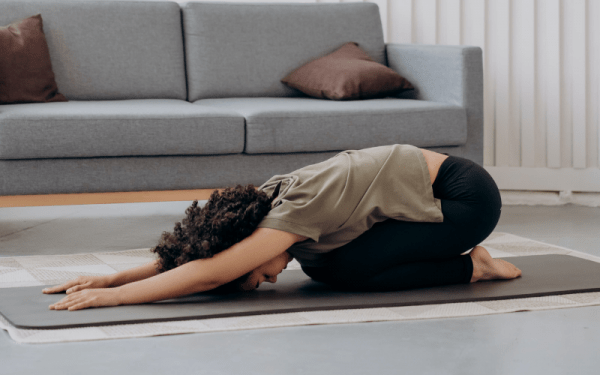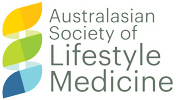
Mindfulness in medicine: Is there a place for meditation?
Mindfulness and meditation are powerful practices that impact mental and physical wellbeing. But how can it impact the patients and clients we care for? Where is its place in our professional lives and practice?
Fortunately, there is a wealth of research that shows the vast benefits of meditation and mindfulness. This article is a broad introduction to a topic that can lead to years of practice and teachings, yet the benefits begin the moment you engage in the practice.
What other therapy or medication are you aware of that can change the expression of 1,561 genes within eight weeks of using it? That can prevent or reduce the loss of the brain’s gray matter as you age? That can reduce the ageing related shortening of telomeres? I’m going to introduce you to the power of meditation and mindfulness for yourself and your clients/patients.
Mindfulness-Based Stress Reduction (MBSR) is the medical/research term for Meditation and its health benefits. Meditation is like going to the gym. I go to the gym not to have impressive biceps but to be able to lift groceries and pick up my niece and other everyday tasks. Meditation is the ‘mind gym’, so that my mind strength serves me well in day-to-day life. I liken meditative practice to reading the User Manual for your brain.
When you become familiar with the thoughts that ‘pop’ up in your mind and how your feelings ‘react’ to the thoughts you focus on, you put yourself in the driver’s seat rather than letting your thoughts steer you. You can choose to stick with a thought or choose to let it go. A simple concept with powerful implications in our lives and health. Through meditative practice you gain the power to deal with life’s stresses in a constructive manner. Choosing how you want to feel and be.
Most people will be familiar with the evidence the demonstrates mindfulness can provide calmness and benefit our emotional wellbeing and health1. The reduction of negative emotions is a key component of many of the benefits of mindfulness.
There is research that suggests that meditation may help people manage symptoms of conditions such as anxiety, chronic pain, hypertension, irritable bowel syndrome, sleep disorders, tension headaches, depression and more. Remembering that meditation is an adjunct to medical treatment, not a replacement, be sure to have clients consult their doctor before commencing any practices, including meditation, if they have any concerns or health problems.
There are a variety of options when it comes to practicing mindfulness. Many picture the serene figure seated on a cushion focusing on their breath, reciting a mantra, or listening to a guided meditation. For some people it may be engaging movement in practices such as walking meditation, Qi gong, Tai chi or one of the many types of yoga.
Most practices combine the principles of focused attention (on breath, mantra, sound, image/object, or movement), relaxed breathing, an open attitude that drops our striving and agendas, often in a quiet, and comfortable setting1. A time and place to simply be. You don’t have to do or be anything for anyone else or for yourself. Non striving. A simple practice that can provide a lifetime full of benefits.
It is recommended that we schedule mindfulness practice into our days. A wonderful way to start or end the day. Others appreciate going to a local meditation centre or class (online also has many options). There are a variety of techniques such as a body scan, prayer, contemplation (reading and/or reflection) or love/gratitude practice to trial and see what works for you.
I recall the myths and misconceptions I had and worked through as I developed my personal mindfulness practice. No, your mind will not stop thinking. Brains think. Learning to recognise that and let the thought pass by without engaging with it and simply noticing that you have engaged with it and returned to your focus (breath, mantra, etc.) is the gentle practice. Done with kindness towards yourself and non-judgement. Another simple but profound practice that carries into your daily life.
Bliss. Where’s the bliss? This is not about getting into an altered state of mind or being. It’s about being here and now. As that’s all there ever is: now. Our minds latch on to past grievances and relives them or worry about possible (not matter how unlikely) future situations that could go wrong.
These thoughts consistently take us away from being in the here and now; which is our lives. The research on MBSR proves that the benefits do not require a spiritual or religious engagement. Years of practice are not required before we start to achieve the benefits. They become evident within a few weeks.
Time. Where am I supposed to find the time? All of us are time pressured. Can you use your 10–15-minute coffee break as an opportunity to sit and be? Start or end your day with 10 minutes practice? Be playful and experiment. See how you go.
Meditation engages the neuroplasticity of our brains. Just like the changes that are seen in the brain when we learn a new skill such as playing the piano, within a week, brain changes occur when we change how we focus and think i.e. meditate2. The brain’s ability to change (neuroplasticity) has been shown to alter the left to right prefrontal (front of the brain) activity ratio towards favouring happy/positive emotions in monks that practice empathy meditation vs non practicing persons’ brains. Meditation makes the gray matter (the nerve cell bodies) in the brain grow3. It is neuroprotective, meaning meditators didn’t lose brain gray matter compared to the age-related loss seen associated with aging in non-meditators.
A 2008 Harvard study3 researching the genetic impact of meditative practice demonstrated that 2,209 genes were activated differently in long term meditators in comparison to non-meditators. They found 1,561 genes were affected within 8 weeks of novice practice. Very quickly the practice of mindfulness reaches deeply to impact our health.
Interestingly, it has been found that the absence of avoidance of negative emotions and thoughts (found in a meditative practice) is associated with the length of our telomeres4. Telomeres are protective caps at the end of our DNA that shorten with age and are associated with cell line dysfunction and death. Dealing with our negative emotions with a positive approach such as MBSR, could result in our cell lines living longer. (I have to admit when I think to myself that I don’t have time to meditate, I remember this research, and recognise I could be losing time that I could have by not meditating).
There is research that suggests MBSR has possible affects on the immune system and specific markers of inflammation5. MBSR pioneer researchers, David Richardson and John Kabat-Zinn, demonstrated significant increases in antibody titres (immune response) following an influenza vaccine after an 8-week introduction to meditation program compared to non-meditators6.
I often get asked, “Do I have to practice teaching this to my patients and clients?” Well, I suppose technically no. I suppose one could teach someone how to swim from a book without any personal experience, but it simply doesn’t compare to sharing one’s experience. Getting in ‘the water’ with them and showing them how it’s done has way more value.
I’m not a trained meditation teacher. Everything I share with you, I share from my personal experience and curiosity. But I do believe what I share and how I share it is greatly affected by my years of practice and all its implications in my life. I also feel that my patients are probably going to doubt the benefits, if I am not motivated to engage with the practice myself. I am always grateful to the Australasian Society of Lifestyle Medicine’s reminders to practice what I preach. I am healthier and a better clinician for it.
You can offer your patient/client an article like this one or suggest an app like CALM or Insight Timer (too many apps to mention, pick what resonates for them) or a local class. There are many great programs online such as the MBSR Palouse program or possibly something like The Open Heart Project. Jon Kabat-Zinn’s book Full Catastrophe Living is a wealth of evidence-based guidance.
You can offer to sit with them for 5 minutes and have them follow you through a brief breath focused practice.
Mindfulness techniques can be quickly and easily implemented into daily medical practice. During the stress of a procedure or pre-anaesthetic, you can play calming music (60 bpm has been shown to be calming and help focus), lead them to focus on their senses; a smell, sound (the music), touch/temperature (their clothing, sheet) or a calming nature photo/print to look at. Invite them to focus on the calming body scan script on the Calm app as you perform a procedure. Be creative. Have some fun. Make it an experiment and see what works.
Here are a few great ways to move your patient/client from the fight or flight, and adrenaline/cortisol sympathetic nervous state to the relaxed, serotonin/dopamine parasympathetic nervous state:
- Three, slow, deep breaths.
- Ask them about their favourite vacation and ask them to paint the picture with all the details. Or a trip they have planned.
- Hand on heart. Close eyes. Picture someone or being (pet?) that they love with all their heart.
- Nature sounds on device or Spotify
- Play their favourite chill out music on Spotify
- Havening (they run their hands down their face and/or arms)
- Figure Eight. A lovely hypnotic action where they move their extended clasped hands in a figure eight in front of their eyes and gradually make it larger.
- Have you heard of or tried mirroring? It starts by matching their posture and limb placement (arm position, crossed legs etc.) and gradually moving into the calm, relaxed state that you would like them to follow. Be the state of mind and body they can unconsciously follow. This is intended for your client/patient to reach the state they want to be in and is not to be manipulative. When your doctor really sees you and even during that brief connection can support you with a calm, confident manner before your surgery, you can well imagine what a difference that will make compared to quick, cursive interactions in a rushed state. It doesn’t take long to put the care into healthcare.
How do you sell this? Some people are receptive to mindfulness practices. Others will disengage at the notion of something ‘airy fairy’. You can confidently offer evidence-based techniques proven to be healthful for their mind and body.
You deserve your healthiest and happiest life. Meditation and mindfulness lie on that path. For you and your patients/clients. Play around with it. Find the practice and timing that works best for you. Be curious. Be kind. Be playful. Remember this is about non striving. Just be. A time to just be. For you. For your patients/clients. Nothing to lose, and so much for you and your patients/clients to gain?
- Mayo clinic link – https://www.mayoclinic.org/tests-procedures/meditation/in-depth/meditation/art-20045858#:~:text=%22Meditation%2C%20which%20is%20the%20practice,disease%20and%20high%20blood%20pressure.
- The Brain: How The Brain Rewires Itself by Sharon Begley Time Magazine Jan 19,2007
- How Meditation Affects the Gray Matter of the Brain by David R. Hamilton, Ph. D. The Huffington Post, Oct 7 2010
- Mindfulness (N Y).2016; 7: 651–659. Published online 2016 Feb 22. doi: 1007/s12671-016-0500-5 PMCID: PMC4859856 PMID: 27217844 Zen meditation, Length of Telomeres, and the Role of Experiential Avoidance and Compassion Marta Alda, Marta Puebla-Guedea, Baltasar Rodero, Marcelo Demarzo, Jesus Montero-Marin, Miquel Roca, and Javier Garcia-Campayo
- Ann N Y Acad Sci. 2016 Jun; 1373(1): 13–24. Published online 2016 Jan 21. doi:1111/nyas.12998 PMCID: PMC4940234 NIHMSID: NIHMS744023 PMID: 26799456 Mindfulness meditation and the immune system: a systematic review of randomized controlled trials, David S. Black1 and George M. Slavich2
- Psychosom Med Jul-Aug 2003;65(4):564-70. doi: 10.1097/01.psy.0000077505.67574.e3. Alterations in brain and immune function produced by mindfulness meditation Richard J Davidson1, Jon Kabat-Zinn, Jessica Schumacher, Melissa Rosenkranz, Daniel Muller, Saki F Santorelli, Ferris Urbanowski, Anne Harrington, Katherine Bonus, John F Sheridan
This article has been written for the Australasian Society of Lifestyle Medicine (ASLM) by the documented original author. The views and opinions expressed in this article are solely those of the original author and do not necessarily represent the views and opinions of the ASLM or its Board.



